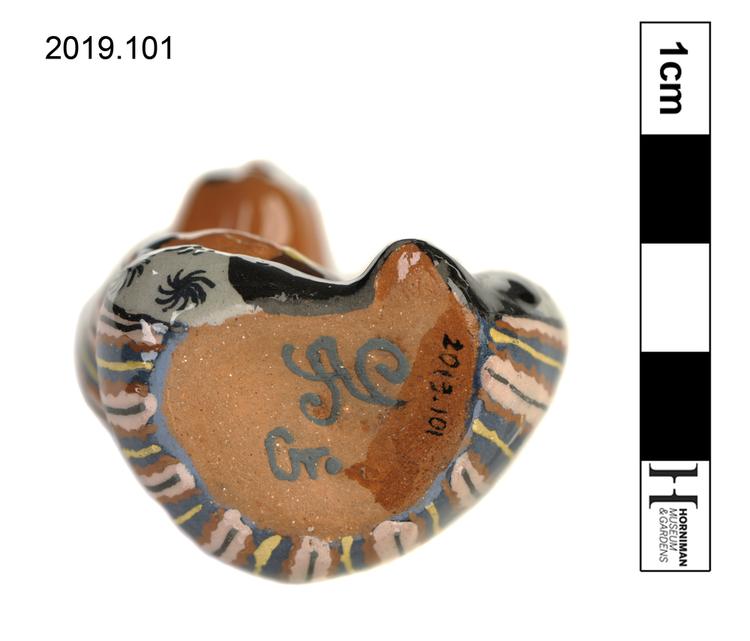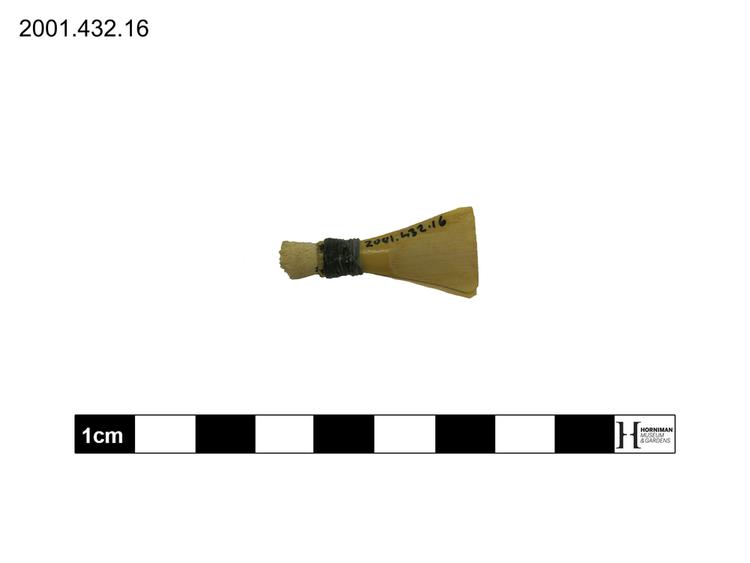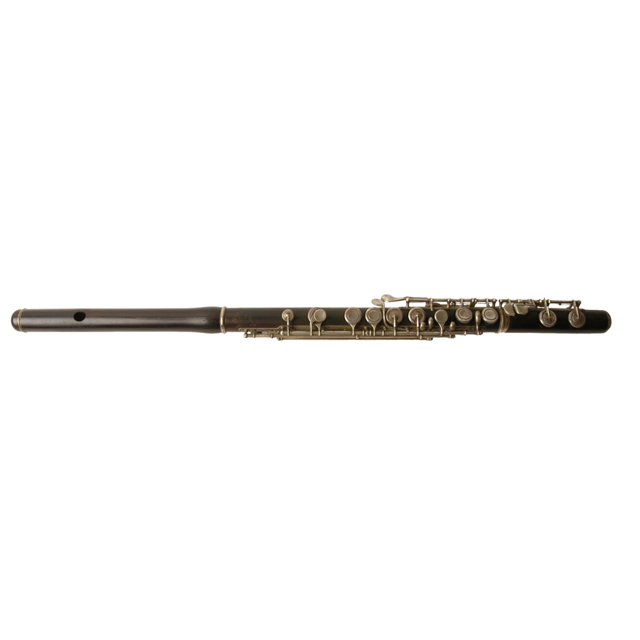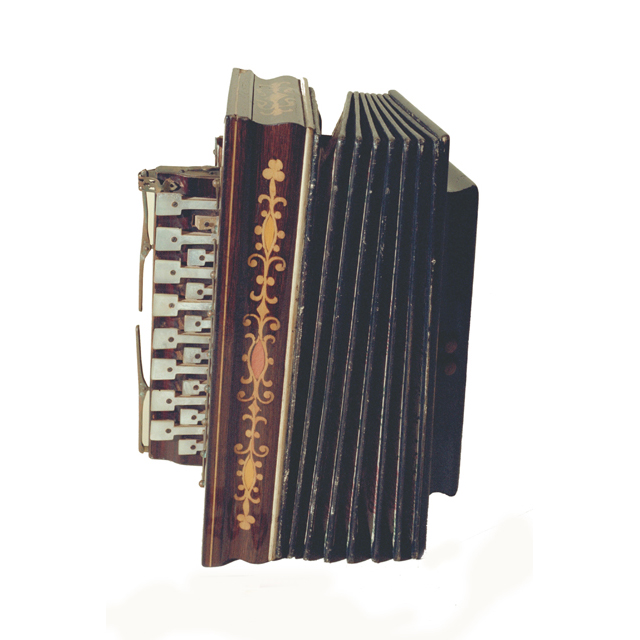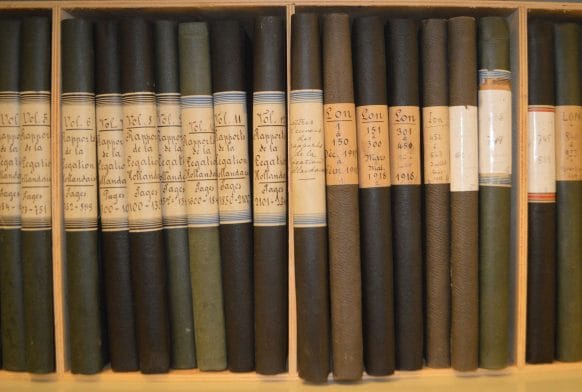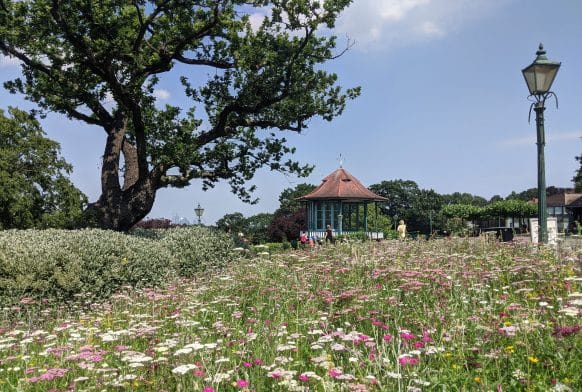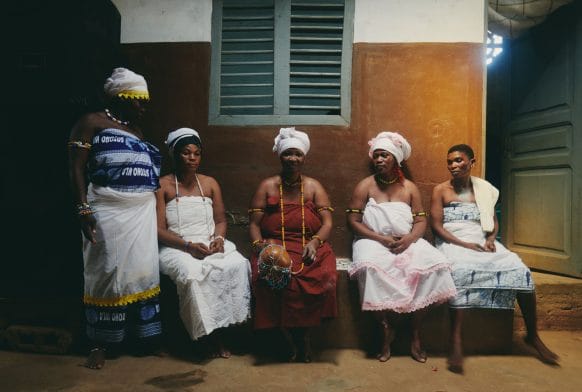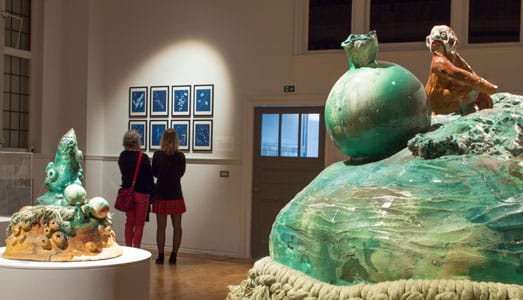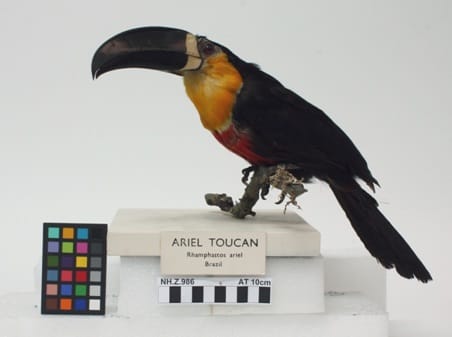6-Keyed bugle. This bugle is the only surviving instrument from the first workshop set up in 1819 by Charles Pace with his brother Frederick in Crown Street. It has a copper bell and body. The garland and mouthpiece receiver are made of direct method brass, the keyplates and mouthpiece of cementation brass. The rim to the mouthpiece is silver. This bugle illustrates the variety of metals old and new that can be found in an instrument. It highlights the nature of the maker's workshop in the early nineteenth century when scrap metal made of cementation brass was being recycled into new instruments where brass made by the direct method was also used. Index card reads: Key bugle. C. & F. PACE/2 CROWN STREET/WESTMINSTER; Peterborough Museum. Six keys: copper, with brass mouth-pipe and bell-rim. Mouthpiece probably not original. 1819-1827. Needs cleaning: generally in sound condition. Consider replacement of mouthpiece. Overall length: 478 mm
This bugle is the only surviving instrument from the first workshop set up in 1819 by Charles Pace with his brother Frederick in Crown Street. The garland and mouthpiece receiver are made of direct method brass, the keyplates and mouthpiece of cementation brass. This bugle illustrates the variety of metals old and new that can be found in an instrument. It highlights the nature of the maker's workshop in the early nineteenth century when scrap metal made of cementation brass was being recycled into new instruments where brass made by the direct method was also used.



